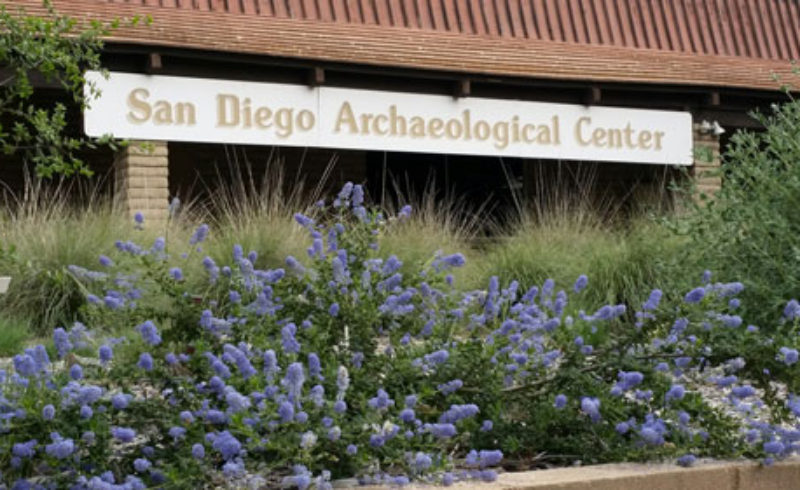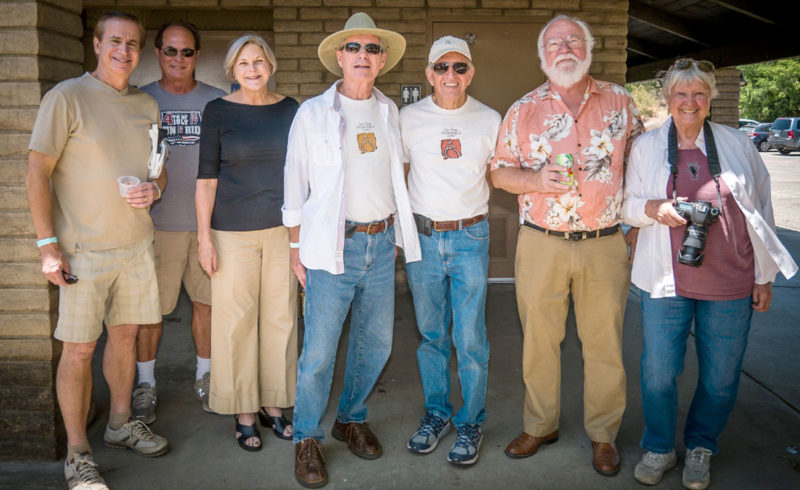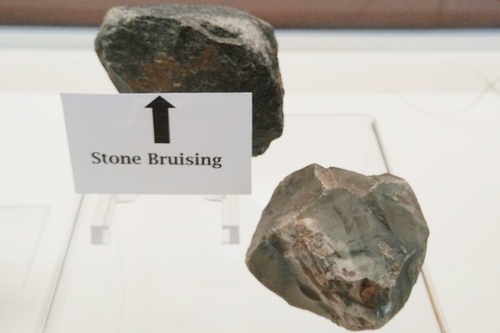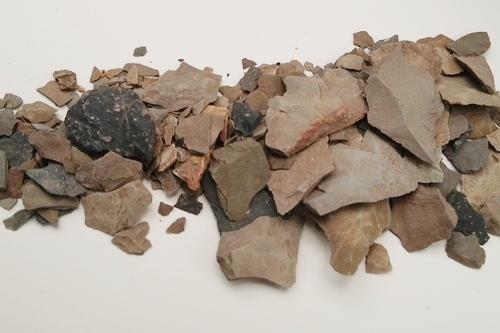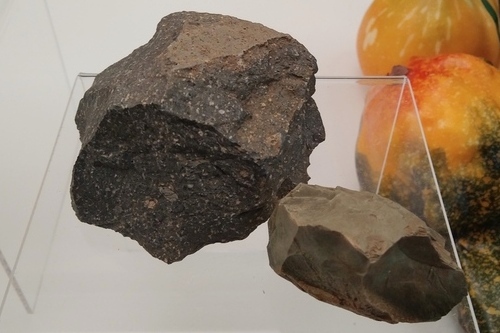Artifact of the Week: Biface
A biface is any stone tool worked on both sides. However, archaeologists commonly used the term to describe tools that were made to used as knives or spear points. They would have been attached to wood or bone handles and…
Artifact of the Week: Hammerstone
Hammerstones were used to make other stone tools. They required little modification and were chosen for hardness and size. After use, hammerstones develop whitish areas called stone bruising. This happens when the other minerals in the stone are crushed. Knapping…
Artifact of the Week: Debitage
During the process of making stone tools, knappers produce many waste flakes. These tiny flakes and stone shatter are called debitage. By studying debitage archaeologists can gain a better understanding of how tools were made and what materials were preferred.…
Artifact of the Week: Core
Cores were selected as raw material to make stone tools. Flakes were stuck off the core and worked further until the desired shape was obtained. Cores may were discarded when they were considered exhausted or used up. Stone tools have…

